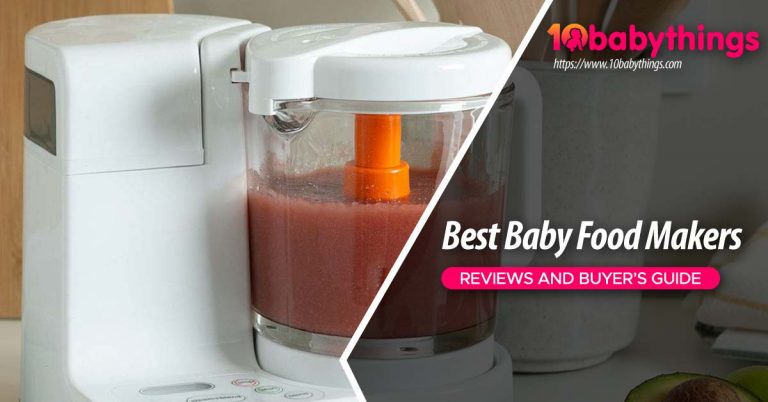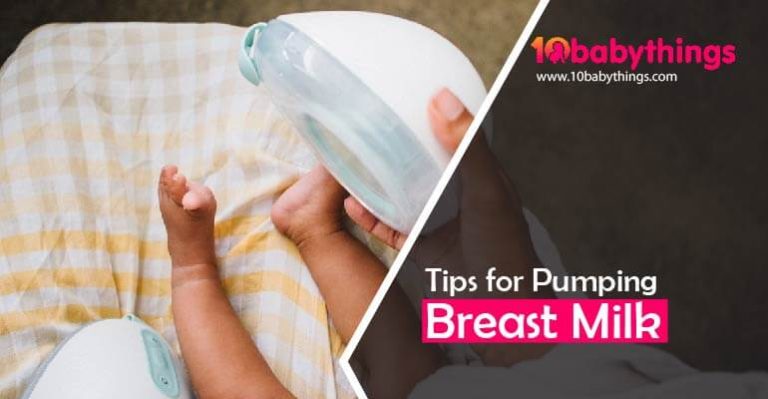Types of Breast Pumps: Which One is Right for You?

Different types of Breast pumps provide a convenient way to continue feeding your baby while you are separated from them. A plugged duct, engorgement, or a drop in milk supply can also be resolved with the help of these devices.
The majority of breastfeeding parents will want a pump on hand, regardless of whether they intend to pump regularly or only occasionally. It can be quite confusing to figure out which pump to buy when there are so many available!
You may be unsure which pump is right for you because there are so many kinds of pumps. Here are the different kinds of pumps, and how to determine which one is best for you.
The Workings of Breast Pumps?
Getting to know how breast pumps work can be helpful before exploring the different kinds of breast pumps available.
Lactation consultant Nicole Schwartz, IBCLC at Beyond Birth Collective, explains that breast pumps mimic how babies suckle at the breast. As a result of the pump cycle, suction is created, then released, which triggers the milk to pass from the breast.
According to New York lactation consultant Leigh Anne O’Connor, IBCLC, breast pumps extract milk using vacuum pressure. According to O’Connor, some pumps also apply pressure similar to a massage.
Pumps are made up of three main components: the breast shield, which covers the area where the breasts and areolas meet; the pump itself; and the container in which the milk is collected.
Breast shields or flanges are the parts of pumps that seal the breasts,” Schwartz says. From the suction generated by the pump, the nipple is pulled into the flange tunnel, and this pull and release stimulate milk release.
The difference between an electric or battery-powered pump and a manual pump often confuses people. Manual pumps work by stimulating the vacuum mechanism by squeezing a handle, according to O’Connor. A battery-operated or electric pump, on the other hand, boasts built-in machinery that helps extract your milk by creating a vacuum.
Types of Breast Pumps
Breast pump manufacturers sell many types of pumps, each with its own perks, bells, and whistles. Manual pumps, battery-operated pumps, electric pumps, and hospital-grade pumps are a few types of breast pumps a company might offer.
A breastfeeding parent might use a different type of pump depending on their needs. There are several types of pumps, so here’s what you need to know.
Manual Pumps
Using your hand, you squeeze a lever or horn to operate a manual pump. When you squeeze the seal, a pressure is created that extracts the milk. The simplicity of manual pumps and the fact that they don’t require batteries or electricity make them attractive to many parents. The cost of these products is also relatively low.
Schwartz suggests having manual pumps on hand, especially during the initial stages of engorgement. With manual pumps, you don’t have to pull out the electric pump in order to drain your breast milk fast.”
Keeping a manual pump around is also a good idea as a backup in case the automatic pump breaks down. When you’re at work or on a road trip, always bring a manual pump just in case your electric pump breaks down.
A manual pump’s drawbacks are that it pumps only one breast at a time, it isn’t as powerful as an electric or hospital pump, and you will get tired if you use it frequently. In the case of frequent separations from your baby, such as when working, these are best for brief separations but not for maintaining or increasing your milk supply.
Battery-Operated Pumps
An electric motor powers a battery-operated pump, which is powered by batteries. Electric pumps are usually larger and heavier than these pumps. Electric pumps in general provide more options for suction strength and other variables than manual pumps, but they aren’t as powerful as manual pumps.
“Battery-operated pumps are useful for occasional pumping,” says O’Connor. Their size and portability make them ideal for traveling.”
You don’t always have access to an outlet when you’re using a battery-operated pump. As Schwartz points out, batteries-operated pumps are ideal for pumping in a car or on an airplane.
Electric Pumps
Those who need to pump for their baby regularly and who are working usually choose electric pumps. The majority of them are budget-friendly and portable. A basic electric breast pump is generally covered by insurance companies under the Affordable Care Act.
In terms of budget and features, electric pumps are the most widely available, says Schwartz. Pumps powered by electric motors are typically a great choice for most pumpers, whether they are occasional pumpers or exclusive pumpers.”
Different modes and suction strengths are offered by most electric pumps. Letdown mode (or massage mode) mimics the way your baby suckles to induce your letdown, and is usually faster than massage mode. Upon switching to extraction mode, the pump moves slowly and steadily in order to simulate a baby’s suckling patterns.
Hospital-Grade Pumps
Sometimes, using a hospital-grade pump may be a good idea. Pumps like these are used at the hospital to help breastfeeding parents with their milk supply or to pump for premature or medically vulnerable babies who can’t yet breastfeed directly.
If you have to exclusively pump, a hospital-grade pump is often recommended, and it’s usually the best pump for boosting your milk supply. Schwartz says hospital pumps are great for causing lactation and moving. Because of how comfortable and efficient hospital-grade pumps are, some working parents prefer them as well.
Many parents rent these pumps from hospitals or other providers because they are very expensive, costing several thousand dollars. The multi-user nature of hospital-grade pumps makes them suitable for renting.
“ Hospital-grade pumps have bacterial barriers and are suitable for multiple users,” explains O’Connor.
Is it possible to share breast pumps?
Multi-user pumps are available only in hospital-grade versions because the closed system prevents milk from entering the motor of the pump and causing bacterial growth. Your own clean and new pumping tubes and flanges are required if you use a hospital-grade pump.
Breast pumps that are manual, battery-operated, or electric are strongly discouraged from being shared due to concerns about contamination. Therefore, most friends should be discouraged from handing down pumps. According to the FDA, you should make sure that any pump marked “hospital grade” can be used for multiple purposes.
What is the effect of pumping on your milk supply?
Does pumping reduce milk supply? Breast milk supply is not decreased by pumping itself. Boosting it can even be beneficial. First, check that you are using the right breast pump if you are experiencing low milk supply.






